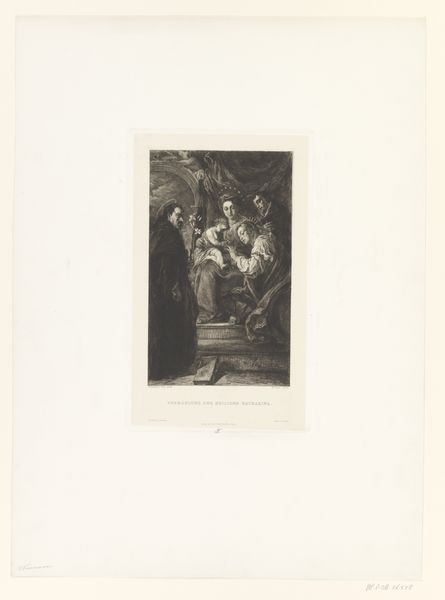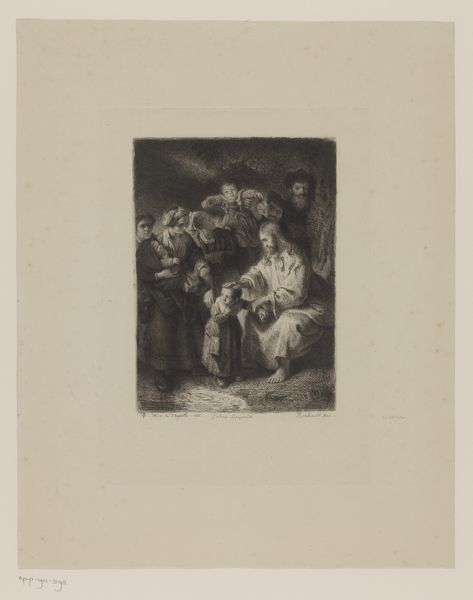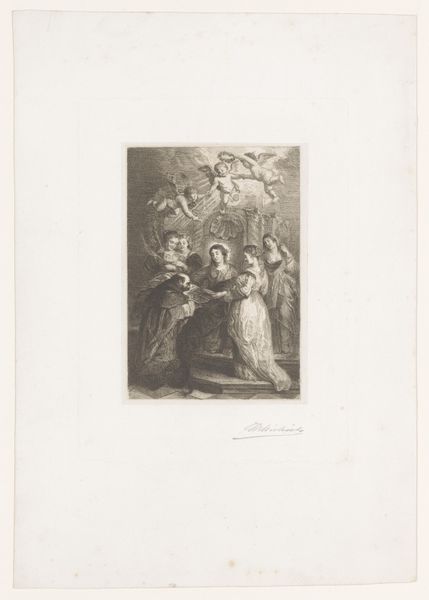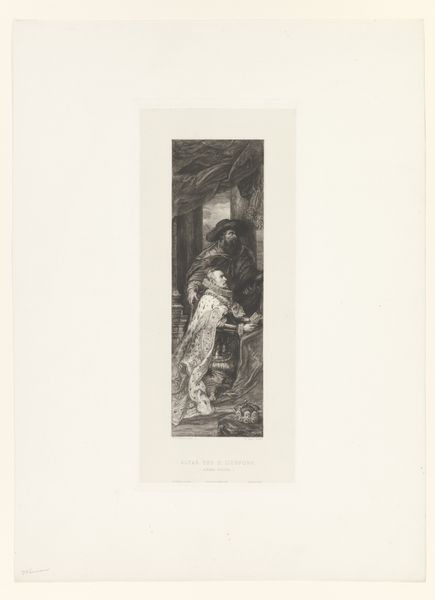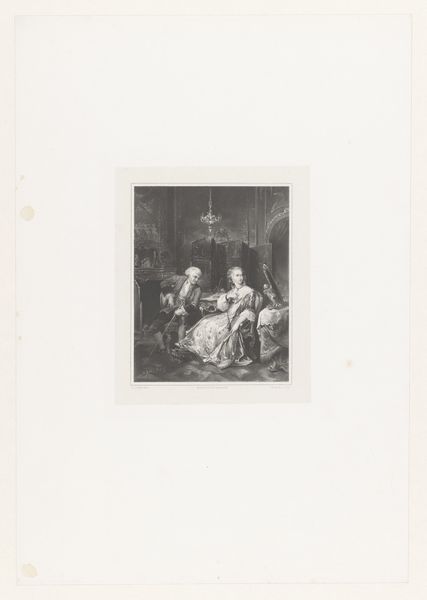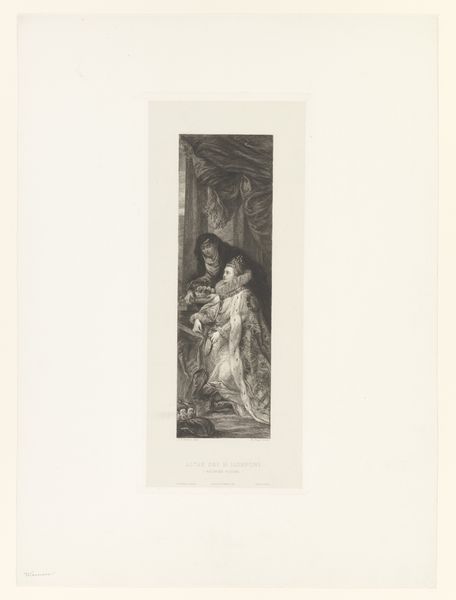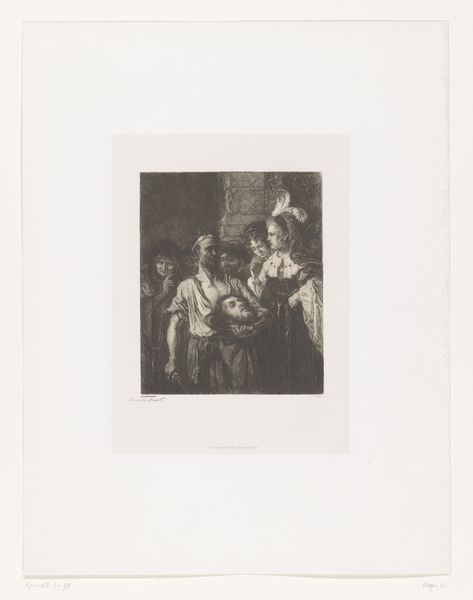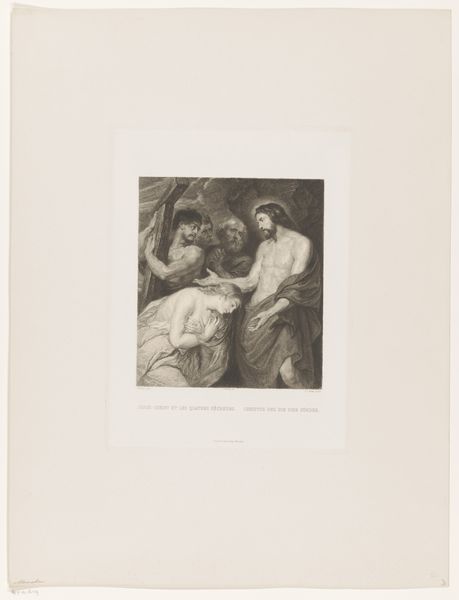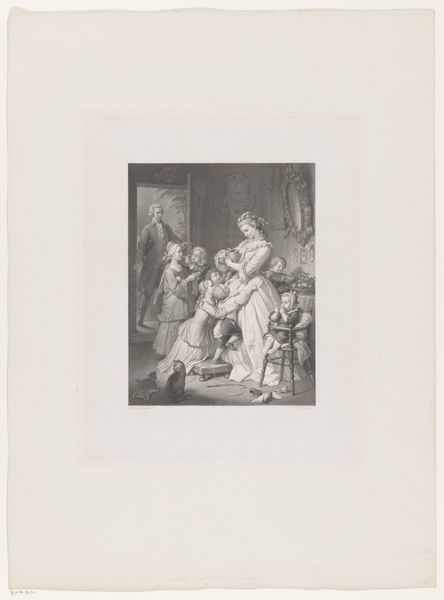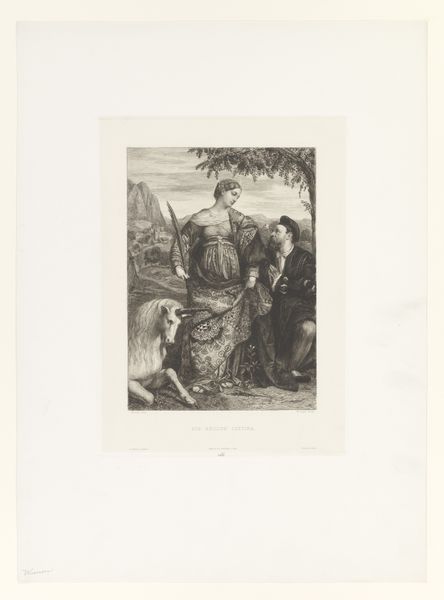
print, etching, engraving
#
portrait
#
shape in negative space
# print
#
etching
#
old engraving style
#
figuration
#
history-painting
#
academic-art
#
engraving
#
realism
Dimensions: height 319 mm, width 209 mm
Copyright: Rijks Museum: Open Domain
Curator: Editor: Here we have William Unger's "Heilige Familie," made sometime between 1861 and 1889. It’s an etching, or rather, an engraving, which lends itself to a very classical, almost austere feel. What stands out to you about this work? Curator: As a materialist, I find myself drawn to the physical act of creation. With Unger’s "Holy Family", it’s vital to consider how the printmaking process impacts our understanding of the subject matter. The reproductive nature of printmaking allows this holy scene to circulate and be consumed in a way a painting never could. Consider how this impacts access and perhaps, even, devalues the image. How does mass production alter perception of sacredness? Editor: That’s an interesting point. It does shift the context when you think about it becoming readily available. I was initially just focused on the kind of Renaissance aesthetic of the work. Curator: But the ‘Renaissance aesthetic,’ as you put it, is mediated through the labour of the engraver and the mechanics of the printing press! The very *stuff* of the image becomes part of the message. The dense network of lines, the way light and shadow are rendered--these aren’t just aesthetic choices, they’re the result of a specific process, a specific kind of work. Are we really seeing "The Holy Family" or Unger's interpretation of an older painting, mediated through nineteenth-century industrial means? Editor: So, by focusing on the "means of production," as you say, we move away from seeing this as purely a devotional image and more towards understanding it as a product of its time. Curator: Precisely! And that's where the real richness lies. Examining the labour embedded in the work forces us to confront its social and economic context. Editor: This has given me so much to think about. I guess I need to rethink the art object less as some mystical piece and more as, literally, something *made*! Curator: Exactly! And thinking about *how* it's made reveals so much about the world in which it was created. It certainly adds another dimension to my experience with the piece.
Comments
No comments
Be the first to comment and join the conversation on the ultimate creative platform.
